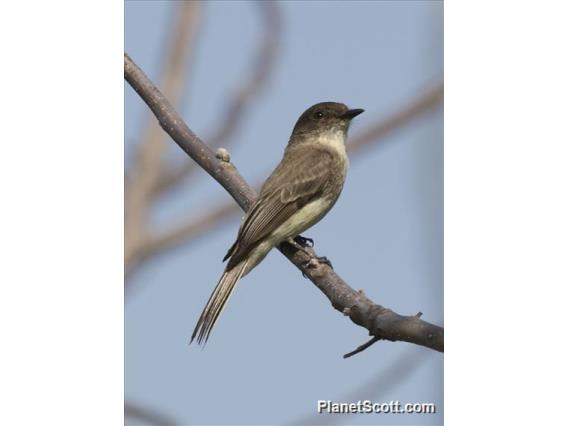Eastern Phoebe (Sayornis phoebe)

Eastern Phoebe (Sayornis phoebe)

Eastern Phoebe (Sayornis phoebe)


×



Eastern Phoebe (Sayornis phoebe)

Eastern Phoebe (Sayornis phoebe)
About Eastern Phoebe (Sayornis phoebe)
- Kingdom: Animals
- Phylum: Chordates
- Class: Birds
- Order: Perching Birds
- Family: Tyrant Flycatchers
The eastern phoebe is a small passerine bird. The genus name Sayornis is constructed from the specific part of Charles Lucien Bonaparte's name for Say's phoebe, Muscicapa saya, and Ancient Greek ornis, "bird". Phoebe is an alternative name for the Roman moon-goddess Diana, but it may also have been chosen to imitate the bird's call.
Source: Wikipedia
Trips
Visits
-
2007-06-16
Cape May National Wildlife Refuge - Cedar Swamp, United States of America -
2009-05-09
Nelson Lake Forest Preserve, United States of America -
2012-07-08
Necedah NWR, United States of America -
2012-07-09
Sax-Zim Bog, United States of America -
2012-07-10
Bluestem Prairie, United States of America -
-
-
-
-
-
-
-





